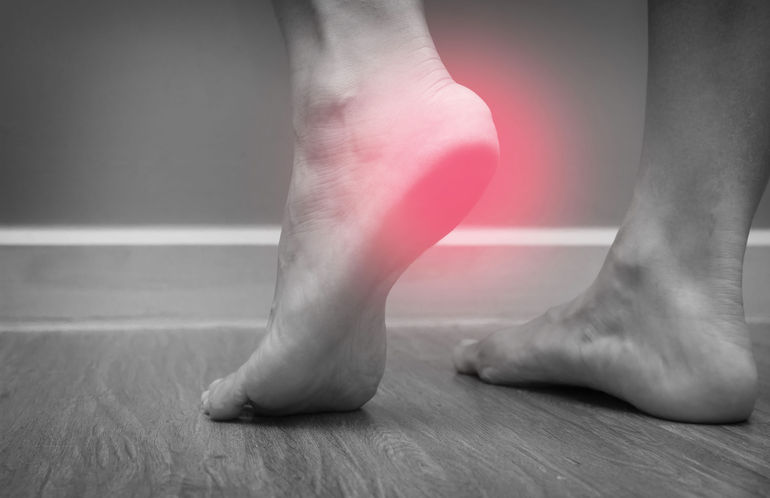The Centers for Advanced Orthopaedics is redefining the way musculoskeletal care is delivered across the region with locations throughout Maryland, DC, Virginia and Pennsylvania.
Tips for Identifying & Treating Heel Fractures

If you suffer a fall injury, oftentimes the first part of your body to strike the ground is your foot, and oftentimes the first part of your foot to hit the ground is your heel. Your heel bone, also known as the calcaneus, is designed to help shoulder the normal stress that comes with walking and moving, but if it becomes overloaded in a moment of acute trauma, a fracture can occur. In today’s blog, we take a closer look at how calcaneus fractures develop and how a foot specialist can help you treat them.
Understanding The Calcaneus
The calcaneus is a bit of a unique bone in that it is often compared to a hardboiled egg. The bone has a hard outer surface that protects a softer, spongier bone on the inside. The design is great, until a fracture occurs. When that outer surface breaks, the bone can easily collapse and fragment. As you might have guessed, fragmented bone does not always heal as well as non-fragmented fractures, meaning calcaneus fractures are often tricky to address. Given their complexity and the possibility that it could heal incorrectly, surgery is often recommended for heel bone fractures.
Falls are one of the most common sources of heel bone fractures, but they are far from the only cause. Calcaneus fractures are also common in car accidents where a vehicle comes to an abrupt stop. The can also occur during sporting activities, but are more common in athletics that take place on hard surfaces, like basketball, volleyball and hockey.
Calcaneus fractures are classified as one of two different types - intra-articular fractures and extra-articular fractures.
- Intra-articular fracture - This is the more severe of the two, and it means that the fracture involves the subtalar joint, which provides stability to the foot. This can also involve damage to the cartilage in the area.
- Extra-articular fracture - These do not involve the subtalar joint, but that doesn’t mean they will be simply managed. These can still result in a fragmented fracture and oftentimes require surgery to address.
Treating A Heel Fracture
If you have suffered a heel injury and you want to confirm or rule out a calcaneus fracture, head to a foot specialist’s office. They will begin by asking about your symptoms and how the injury occured. They may also look at the injury and ask you to perform a few simple physical tests. Finally, they will confirm their suspicions with the help of an x-ray or similar imaging device, but x-rays tend to be the standard imaging device of choice for this type of potential fracture.
Treatment will be based on what the specialist sees on the imaging test. If you have a non-fragmented fracture that your doctor believes will heal well on its own, they will likely recommend a few weeks of non-operative treatment paired with a follow up appointment to ensure healing is going as expected. Non-operative treatment involves RICE (Rest, Ice, Compression and Elevation), or the doctor may order a walking boot or cast to help protect the area and prevent stress while healing runs its course.
If you have a displaced fracture or the surgeon believes that the heel is unlikely to heal properly and in a stable location on its own, surgery will be recommended. If no bone has broken through the skin, the surgeon may have the patient wait a little while until swelling subsides so surgery can be more easily performed. There are a couple of different ways a foot surgeon can work to correct a calcaneus fracture, but they tend to involve the insertion or screws, wires, plates or similar hardware to hold the bones in the correct location while healing runs its course.
Fixing a calcaneus fracture is a complex operation, and you’re not out of the woods once surgery is complete. It is especially important that you follow your doctor’s post-op rehabilitation guidelines to avoid suffering a setback or causing the operation to fail. Most patients can return to normal activities within 3-4 months of surgery, but more severe fractures can take up to a year or more.
For more information about heel fractures, or to talk to a specialist about your heel pain, reach out to the talented orthopedic team at The Centers For Advanced Orthopaedics today.